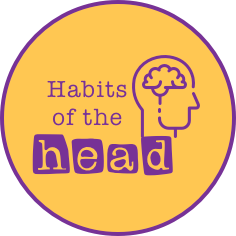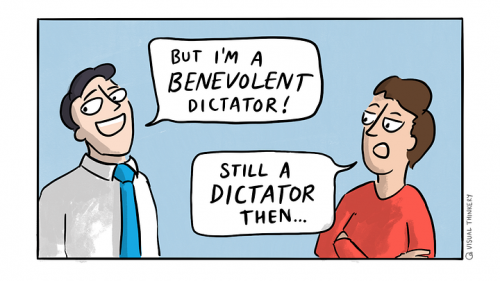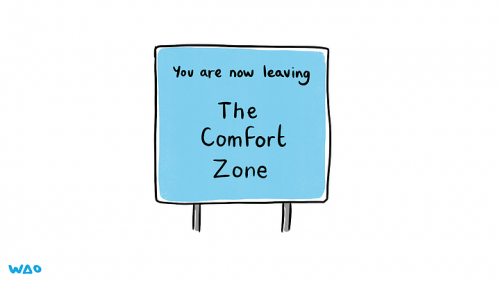Most of us often use aggressive comparisons in our speech without considering where they come from or what they really mean. We don’t actually mean the literal words we say; instead, we use a figure of speech — a metaphor. For example we say that a colleague has been “thrown under a bus” when we mean that they’ve been blamed for something to protect another person. It’s true that many of these expressions might be innocent and just a part of normal conversation. However, it’s important to remember that using harsh language can have an effect on others, especially trauma survivors.

In this post, we’ll explore the history of violent metaphors and the most common ones used today, as well as examine the potential consequences of their use. As we discuss in our Feminism Is For Everybody, Especially Educators course on our ‘Learn with WAO’ site , feminist habits of the head include: reflecting on the truth and nature of knowledge, understanding where things come from, as well as how they influence our interactions with others.
While it’s difficult to pinpoint exactly when violent metaphors began to be used, we can safely say that many common violent metaphors come from the military-industrial complex. As a result, we use particular metaphors and idioms in our communities that come from competitive business practices. Many of the things we say today, without thinking about it, also stem from moments in history where discrimination and inhumane practices were even more common. Lots of the phrases we use today have racist, ableist or other discriminating undertones that we have to reflect on.
The 2020 Black Lives Matter movement helped many tech companies realise some of the ways in which their terminology was problematic. The industry started to change some commonly used phrases once people were aware that they had origins in slavery and segregation. One example of this is GitHub changing the name of the default branch of all new code repositories from ‘master’ to ‘main’.

We’ve all heard the embarrassing use of “we’ll go to war [with our competitors]”, “fight for market share”, or “take no prisoners” in corporate television shows we pretend we’ve never watched. These metaphors literally evoke images of battle and conflict, and are intended to create a sense of urgency in the workplace. They are used on purpose in many industries, even while industry leaders complain about a lack of diversity.
These turns of phrase establish an environment of intimidation, and place workers in competition with their colleagues, customers or industry. Their use also reinforces hierarchies.
There are common violent metaphors prevalent in our communities. Have you used any of these lately?
- cutting edge — implies that a person, product or service is so innovative and effective that it can “slice through” the competition
- kill two birds with one stone — suggests that by taking a single action, two objectives can be accomplished simultaneously
- shooting fish in a barrel –suggests that something is very easy

These are just a couple of examples, but there are many metaphors and idioms with violent undertones.
These metaphors may seem harmless, but their use can have negative consequences. It’s a way of using language to implicitly reinforce physical power. They can create an overly competitive and aggressive atmosphere in a community or workplace, where people are encouraged to see one another as adversaries rather than as peers. They can reinforce unhealthy power dynamics and perpetuate harmful gender stereotypes. They can even trigger post-traumatic stress disorder.
As if those potential consequences weren’t enough, this language can be extremely confusing for our community members who have English as a second language.
All of this can lead to a lack of cooperation and teamwork, which in turn can hinder the community’s practices, psychological safety and, ultimately, inclusivity. For some people, this kind of language causes stress which then affects their motivation, performance and/or productivity.
What to do about it

Language is really tricky, and it takes time to change the ingrained thought patterns that influence the way you speak! You may have grown up in a family that used casually racist (“I’ve been gypped!”) or sexist phrases (“Don’t cry like a girl!”). This sort of language, like violent metaphors, reinforce stereotypes and social phenomena that aren’t necessarily reflective of the world you want to live in.
It’s worth making an effort to self-reflect on the language that you use, especially when you are active community members.
Start small with awareness. If you use a phrase that might be a violent metaphor, reflect on that. Can you change the metaphor next time? Have a think about the violent metaphors you use, and let’s see if we can find better ways to say what we mean.